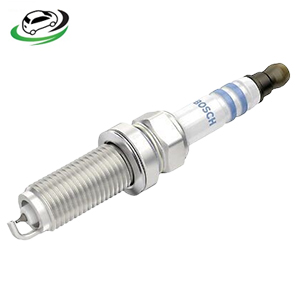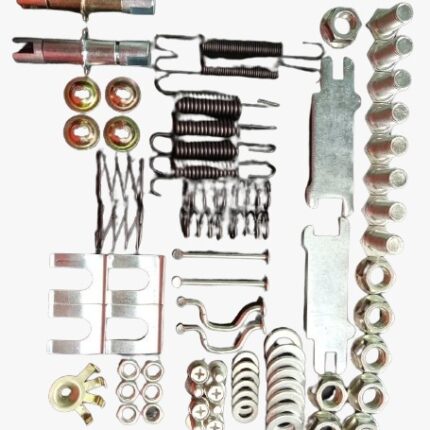-17%
Get Subaru Impreza, Legacy, Tribeca Front Wheel Hub 0882-G12MF
The wheel hub is a crucial component in a vehicle’s suspension and steering system, responsible for supporting the wheel and enabling it to rotate smoothly. Understanding the structure, function, types, and importance of wheel hubs provides insights into their role in vehicle performance, safety, and maintenance. This comprehensive guide explores the wheel hub in detail.
Structure of a Wheel Hub
A wheel hub typically consists of the following main components:
- Hub Body: This is the central part of the wheel hub assembly that mounts directly to the axle shaft. It houses the wheel bearings and provides a mounting surface for the wheel and brake rotor or drum.
- Wheel Bearings: These are precision-engineered bearings that allow the wheel hub to rotate smoothly on the axle shaft. They reduce friction between the rotating components and support the vehicle’s weight.
- Flange: The wheel hub flange is a raised edge or lip on the outer circumference of the hub body. It provides a mounting surface for the wheel and ensures proper alignment and secure attachment.
- Studs or Bolts: These are threaded fasteners that protrude from the wheel hub flange and secure the wheel to the vehicle. Lug nuts or bolts are used to tighten and secure the wheel in place.
- Seals and Dust Covers: These components help protect the wheel bearings and hub assembly from contaminants such as dirt, water, and debris. They are essential for maintaining the longevity and performance of the wheel hub assembly.
Function of Wheel Hubs
The primary functions of wheel hubs in a vehicle include:
- Supporting the Wheel: The wheel hub provides a stable mounting point for the wheel and facilitates its rotation.
- Bearing Support: Wheel hubs house the wheel bearings, which allow for smooth and efficient rotation of the wheel assembly.
- Load Bearing: Wheel hubs support the vehicle’s weight and transmit it from the axle shaft to the wheels.
- Mounting Brakes: In vehicles with disc brakes, the wheel hub assembly provides a mounting surface for the brake rotor. In vehicles with drum brakes, it supports the brake drum.
Types of Wheel Hubs
Wheel hubs can vary based on design, construction, and application:
- Fixed Wheel Hubs: These are solid wheel hubs that are permanently attached to the axle shaft and do not rotate independently. They are common in live axle configurations found in rear-wheel drive vehicles and some off-road vehicles.
- Steering Knuckle Integrated Hubs: In some front-wheel drive vehicles, the wheel hub is integrated with the steering knuckle, forming a single assembly. This design simplifies assembly and maintenance.
- Hub Unit Bearings: Modern vehicles often use hub unit bearings, which integrate the wheel hub, bearings, and sometimes the ABS sensor into a single assembly. Hub unit bearings are typically pre-assembled and are replaced as a single unit when worn or damaged.
- Drive Flange Hubs: These hubs are found in vehicles with full-time four-wheel drive or all-wheel drive systems. They are designed to accommodate constant rotation and torque transfer to the wheels.
Importance of Wheel Hubs
Wheel hubs play a critical role in vehicle performance, safety, and maintenance:
- Vehicle Stability and Handling: Properly functioning wheel hubs ensure smooth and stable vehicle handling by facilitating smooth wheel rotation and minimizing vibrations.
- Braking Performance: Wheel hubs contribute to effective braking performance by providing a stable mounting surface for brake components and ensuring precise alignment.
- Safety: A damaged or worn wheel hub can compromise vehicle safety by affecting steering control, braking efficiency, and overall stability.
- Maintenance and Serviceability: Regular inspection and maintenance of wheel hubs are essential to prevent premature wear of bearings, ensure proper wheel alignment, and maximize the lifespan of brake components.
Maintenance and Replacement
Maintaining wheel hubs involves regular inspection and servicing to ensure optimal performance and safety:
- Inspection: Check wheel hubs for signs of wear, such as excessive play or noise when rotating the wheel. Inspect seals and dust covers for damage or leaks.
- Greasing: Some wheel hubs require periodic greasing to ensure smooth operation of bearings. Follow manufacturer recommendations for greasing intervals and procedures.
- Replacement: Wheel hubs should be replaced if bearings are worn, if there is excessive play in the hub assembly, or if seals are leaking. Replacement intervals vary based on vehicle usage and manufacturer recommendations.
Follow us on Facebook for more parts.



